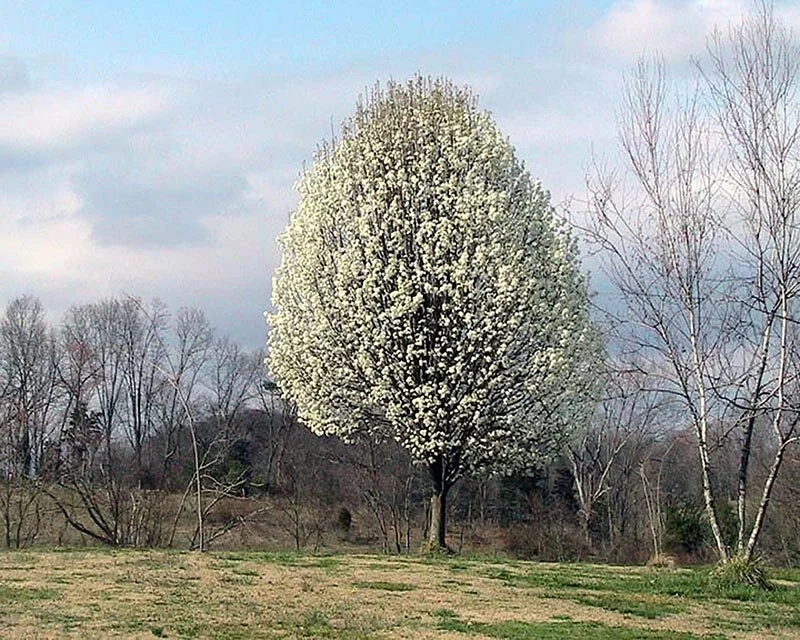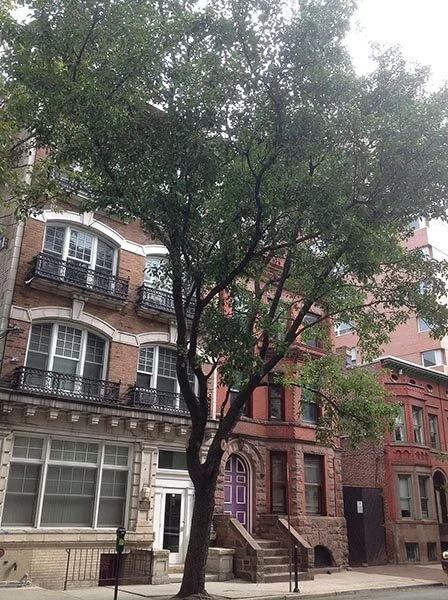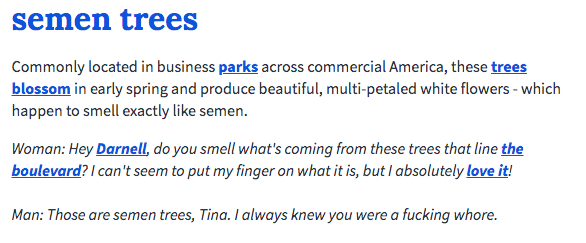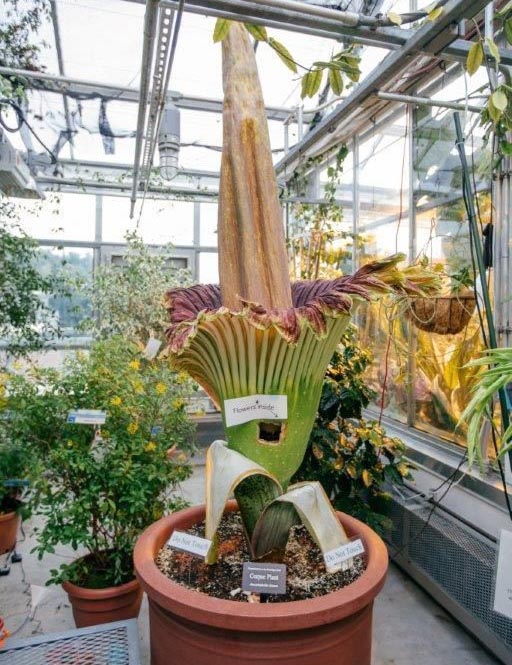Semen Trees Are Stinking Up America
Callery pear trees were once a nationwide favorite, but now government and environmental groups are trying to quash the growth of the invasive species — and not just because of their foul smell.
By Jessie Schiewe
Don’t let the lovely blossoms on this tree fool you. (Wikimedia/C. E. Price)
You probably wouldn’t recognize a Callery pear tree by its flowers. And you probably wouldn't know it by its oval-shaped leaves or conical crown, either.
But if you happened to walk by one this spring/summer, there is one telltale way you’d be able to identify it: by its stench...which smells a lot like semen.
It can be hard to describe the smell of semen to someone unfamiliar with it. Words like “salty” and “bleach-like” come to mind, with some people even equating the stench to chlorine or rotting fish.
But though comparing the Callery pear tree to cum might seem completely arbitrary, it’s actually not. The plant shares chemical elements to the baby-making substance and has a similar overall purpose, too.
The sperm scent stems from the tree’s flowers, which bloom in the spring. Though it might smell foul to our human noses, the stench serves a purpose: it attracts pollinators, allowing the plant to reproduce and spread its seed.
As John Murgel, a horticulturalist in Denver, Colorado, told VICE:
"We normally associate sweet smells with trying to attract bees, but a lot of plants all over the world use really terrible smells in order to attract beetles and flies as pollinators.”
Callery pear trees are also known as Bradford pear trees. (Wikimedia/Mpbaugh)
The exact source of the blossoms’ semen-like smell? A chemical compound that contains trimethylamine and dimethylamine, both of which smell like ammonia. And guess what also contains ammonia? Semen.
However, their ejaculate-like scent hasn’t stopped the Callery pear from becoming one of the most popular trees across America.
Originally imported from China in the mid-1960s by the U.S. Department of Agriculture, semen trees became an instant hit due to their low cost, quick growth rates, and attractive flowers.
In 1966, when President Lyndon B. Johnson was still in office, his wife, Lady Bird Johnson, planted one of the famously hard-to-kill trees in downtown Washington, D.C. Newspapers at the time described it as "close to the ideal" arbor.
A “semen tree” near the campus of Rutgers University in New Jersey. (Wikimedia/Mohammad Hamza)
Callery pear trees are now found all over the U.S., with sightings reported on the West coast, East coast, and in the South, to name a few. Complaints about the odiferous plants are particularly high on college campuses, especially in California. Students at the University of California, Los Angeles, the University of California, Riverside, the University of California, Davis, the University of California, San Diego, and California State University, Northridge have all been prey to their smelly semen scents.
Semen trees have become so notorious that even Urban Dictionary contains an entry for them.
In recent years, however, public opinion about Callery pear trees has soured — and not just because they smell uncannily like jizz. Since their introduction, the non-native species has been spreading rampantly across the nation, outcompeting native plants for space, nutrients, and natural light.
Callery pears can also be dangerous. Though they can grow up to 30-feet tall, the trees have notoriously weak branch structures putting anyone who walks underneath one at risk, especially if the tree is 20 years or older.
Cities and states are taking measures to educate the public about the offensive smelling trees and to thwart their spread as best they can.
Starting in 2023, Ohio will ban the sale and distribution of Callery pears, with the state of Indiana considering doing the same. Property owners in South Carolina are encouraged to remove any semen trees from their land, and in Fayetteville, Arkansas, if you send in a photograph of a slain sapling from your yard, you’ll receive a free replacement tree of your choice. The city of Columbia, Missouri, even created an entire webpage called “Stop the Spread of Invasive Callery Pear Tree Hybrids” to spread awareness about the downsides of the plant.
But those who are anti-semen trees face an uphill battle in terms of halting their spread — and we have climate change to thank for that.
Though Callery pears are traditionally cold intolerant, our exponentially warming planet has created increasingly favorable living conditions for the smelly trees pretty much across the map. Now the smell of cum is taking root in spots that normally wouldn’t be plagued with such foul fumes, with the trees slowly creeping further north across the land.













Big-box stores are fooling us into buying visually enhanced plants. Why do we fall for it?